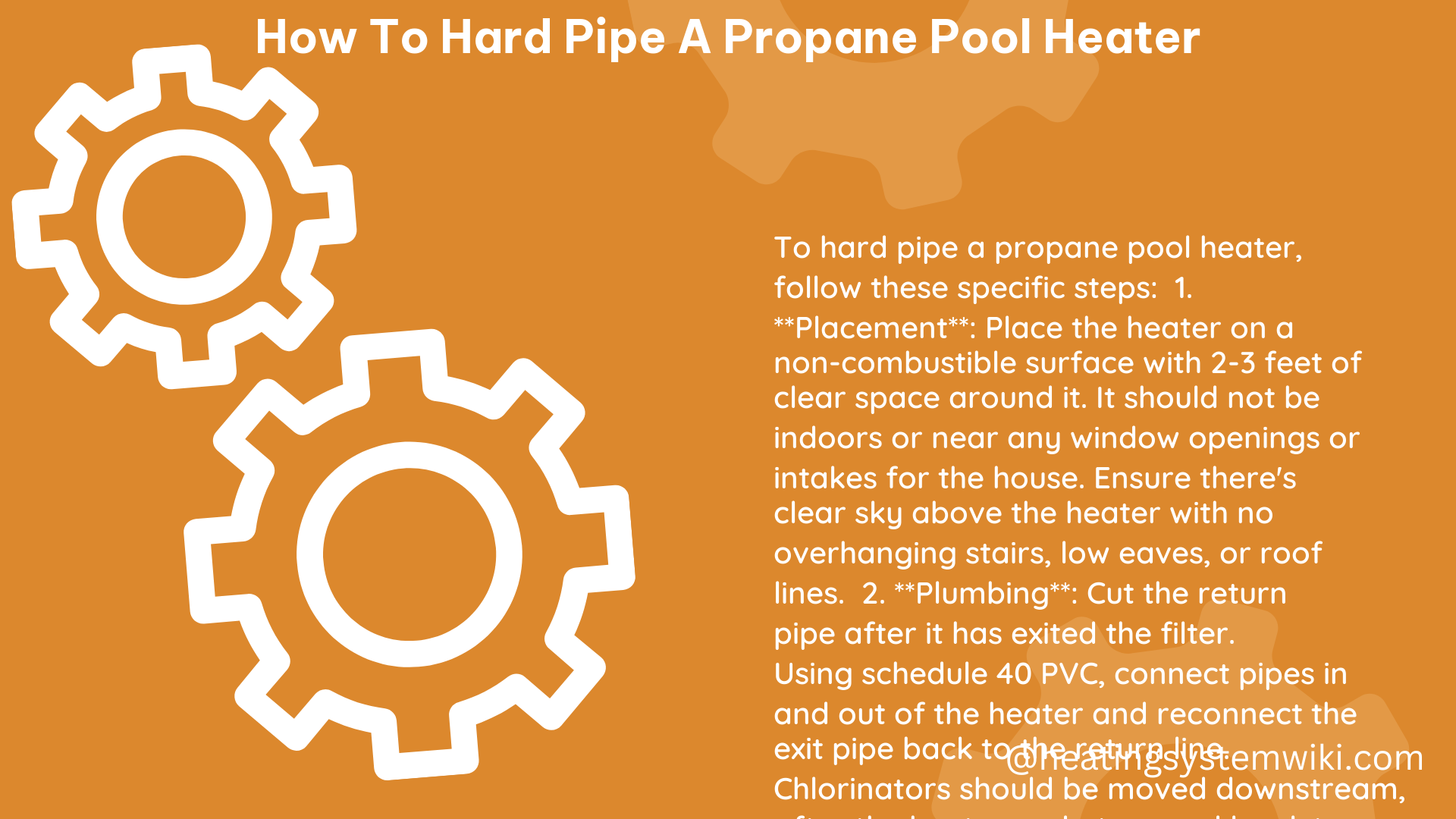When it comes to heating your swimming pool, a propane pool heater can be a reliable and efficient solution. However, to ensure optimal performance and safety, it’s crucial to properly hard pipe the heater to your propane tank. This comprehensive guide will walk you through the step-by-step process of hard piping a propane pool heater, providing you with the technical specifications and expert insights to get the job done right.
Determining the Appropriate Pipe Size
The first step in hard piping a propane pool heater is to determine the appropriate pipe size for your specific setup. The pipe size you’ll need will depend on the BTU capacity of your pool heater and the distance from the propane tank to the heater.
For a 175-200k BTU pool heater, you’ll typically need a 1-1/4″ or 1-1/2″ pipe. Here’s a more detailed breakdown:
| Heater BTU Capacity | Pipe Size |
|---|---|
| 175,000 BTU | 1-1/4″ |
| 200,000 BTU | 1-1/2″ |
The pipe size should be selected based on the heater’s BTU capacity and the length of the gas line run. Longer runs may require a larger pipe size to ensure adequate gas flow and pressure.
Routing the Gas Line

Once you’ve determined the appropriate pipe size, it’s time to decide on the best way to route the gas line from the propane tank to the pool heater. There are a few options to consider:
- Through the Block Foundation: You can run the gas line through the block foundation, ensuring that the line is properly sleeved, typically with a PVC sleeve.
- Outside Through the Wood: Alternatively, you can run the gas line outside the home, through the wood, and then elbow it to go underground.
- Underground: If you choose to run the gas line underground, be sure to use poly gas pipe and include a tracer wire of at least 14 gauge for safety and ease of identification.
Regardless of the routing method, it’s crucial to avoid tapping into the gas line to serve other appliances, as this can lead to draft issues and potential carbon monoxide concerns.
Heater Placement and Clearance
When it comes to the placement of the propane pool heater, there are a few important considerations:
- Non-Combustible Surface: The heater should be placed on a non-combustible surface, such as a concrete pad or a metal stand.
- Clearance: Ensure that there is 2-3 feet of clear space around the heater on all sides. The heater should not be placed indoors or near any window openings or intakes for the house.
- Overhead Clearance: Above the heater, there should be clear sky, with no overhanging stairs, low eaves, or roof lines.
Proper placement and clearance are essential for the safe and efficient operation of your propane pool heater.
Plumbing the Heater
When it comes to plumbing the propane pool heater, you’ll need to use schedule 40 PVC to connect the pipes in and out of the heater. Here’s a step-by-step guide:
- Cut the Return Pipe: After the return pipe has exited the filter, cut it to create a connection point for the heater.
- Connect the Pipes: Use schedule 40 PVC to connect the pipes in and out of the heater.
- Reconnect the Exit Pipe: Reconnect the exit pipe from the heater back to the return line.
- Chlorinator Placement: Move the chlorinator downstream, after the heater and at ground level, to prevent corrosive fumes from backing up.
By following these steps, you’ll ensure a proper and efficient plumbing setup for your propane pool heater.
Gas Connection and Propane Tank Sizing
The final step in hard piping a propane pool heater is to ensure that the gas connection is done correctly. It’s recommended to call your local propane providers for a quote to install the propane tanks and make the connection to your new pool heater.
When contacting your propane provider, be sure to provide them with the output in BTUs of your pool heater. This information will help them determine the appropriate size of the propane tank and regulators needed for your setup.
Conclusion
Hard piping a propane pool heater may seem like a daunting task, but by following the technical specifications and expert guidance provided in this comprehensive guide, you can ensure a safe, efficient, and properly installed system. Remember to always prioritize safety, consult with local authorities and professionals when necessary, and enjoy the benefits of a warm, inviting pool all season long.
